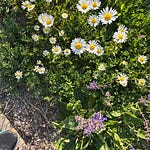This morning I jogged a coastal trail on the east coast of Spain, as a storm brewed inland.
The air was thick with rosemary, windblown and resinous.
I wasn’t planning to stop—but a cliff caught my eye.
Not a dramatic one.
No towering face or cinematic drop into the sea.
Just a quiet wall of layered stone, half crumbling, half defiant.
It looked like nothing at first.
And then I started to wonder » what would it be like to read this?
To someone trained in geology, this is a page in a book.
A story written not in ink, but in pressure, sediment, and time.
What I see as a stripe, they might see as the edge of an ancient riverbed.
What I see as a crack, they might read as a fault line—evidence of tectonic unease.
It makes me wish I could see the world that way.
To walk a trail and understand not just where I am, but when.
To look at the ground beneath my feet and see a desert turning into a seabed, then into rock, then into ruin.
To think in eras, not hours.
I don’t speak the language of rocks.
But I’d like to.
There’s something comforting in the idea that everything leaves a trace.
That nothing truly disappears—it just settles, layers, waits to be found again.
We live in a culture of immediacy, but the land tells us otherwise.
It tells us that change is slow. That time stacks up.
That even the hardest stone was once soft, once sand, once something else entirely.
There’s poetry in that.
And humility.
I walked on, but I kept glancing back at that cliff.
Not because it was beautiful—but because it was honest.
It had nothing to prove.
It had already endured.
Maybe that’s the real gift of learning to read rocks »
not just knowledge, but perspective.
To remember that we are brief visitors on an old, breathing planet.
And that beneath our feet, the earth remembers everything.
Thanks for drifting in time with me today, Lyss













Share this post